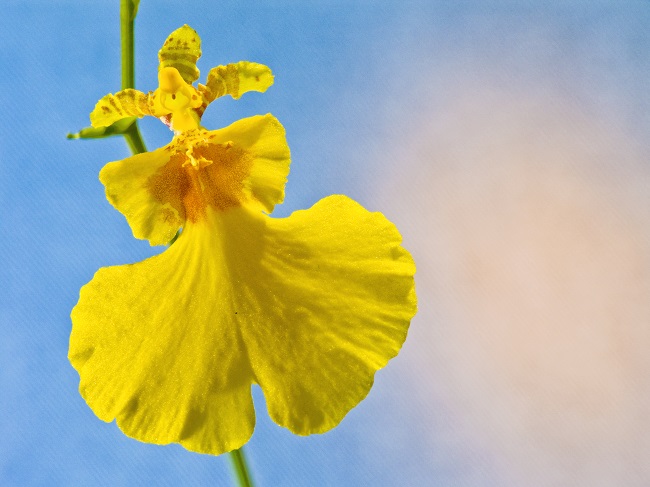
Oncidium orchids are some of the most diverse and oldest types of orchids in the world. They were once described as difficult and temperamental. Nowadays, they have been cultivated anywhere the temperature is moderate and cool. They are actually easy to grow (if you know what to do) and produce flowers that are very colorful and fragrant.
These types of orchids mostly bloom once a year with colors ranging from white to dark red. Their flowers are sometimes described as “butterfly look-a-likes” or “dancing ladies”. If you want to grow healthy oncidium orchids, here are the 8 dangers to avoid when growing them:
Giving Them Too Much Light
Oncidiums are a particularly tricky type of orchid when it comes to light requirements. Generally they need direct sunlight for several hours when they are starting to grow and flower. Once the flowers arrive, you should move your oncidium to a cooler place where there is no direct sunlight to burn its blooms. The oncidium hybrids, though, are different. They require filtered light to develop and thrive.
Overwatering
Overwatering and under-watering are common mistakes when it comes to most orchids. While oncidiums have changing water requirements during their different stages of growth, they should never be overwatered.
Here is the general rule of thumb you should follow to water your plant correctly: When they are starting to grow and beginning to blossom, provide lots of water. After they flower, provide less.
Their roots love water but you must provide adequate drainage or the roots will drown and die. If you see the top compost is already dry, then it is a sign that it needs to be watered again.
Placing Them in One Area For the Rest of the Year
Leaving these types of plants in just one location throughout the year is not advisable. During summer they can be placed outdoors to soak in adequate sunlight and during winters they must be kept in places such as greenhouses or orchid cases. They thrive best in places where the temperature is between 80°F -85°F during the day and 55°F-60° F at night.
Not Providing Necessary Humidity Levels
When it comes to humidity levels, oncidiums need 40%-50%. When it’s hot, be sure to increase it by misting or by creating a bed of pebbles with water on a tray below the plant. The ideal humidity level for these types of plants is between 55%-75%.
Using the Wrong Potting Medium
Choosing the wrong potting medium can be detrimental to the growth of your oncidiums. These types of orchids, when grown in cultivation or even in the wild for that matter, are quite insatiable when it comes to food. Although they can survive and thrive when grown in leaf mold compost, you should still use the best medium for epiphytes, which is osmunda. (If osmunda is hard for you to find, there are other substitutes like fir bark.)
Osmunda is great for plants with very thin root systems, as most oncidiums have. Its fibers are great for providing adequate drainage for the orchid. If feasible, use as little compost as possible. It doesn’t need a lot or the plant will drown in its medium. Place the medium around the roots of the plant and don’t force it all in. Leave it loose so that air can circulate through it. You can build a layer of rock at the bottom of the pot or a thin layer of gravel at the top of the compost for extra support.
Potting Them Incorrectly
When it comes to pots, it is never wise to get a large one for oncidiums. These plants are the types of orchid that do well in small, confined pots; the smaller the size of the pot, the better. Large pots or containers leave the compost moist and overly damp. This is not good for the roots because it will easily cause them to rot.
Over-Fertilizing
Because oncidiums are unquenchable when it comes to plant food, it is suggested to give them regular fertilization to keep them healthy. Feed them once a month with either liquid fertilizer or ground manure and they will be fine. Be sure to wash off any salt deposits after each month to avoid burning their roots.
Repotting
Incessant and untimely repotting can kill any orchid. But because these types of orchids have very thin and short roots, repotting them can be a delicate job. Repot them every two years, and yours will be happy. Be sure to provide enough water after repotting to ensure the growth of its roots.
Mary Ann Berdak is the publisher of OrchidCareZone.com an online destination for orchid growing tips and advice. For more information including a free report on The 5 Biggest Orchid Mistakes and How to Avoid Them visit OrchidCareZone.com.
Related Articles & Free Email Newsletter
4 Mistakes to Avoid with Dendrobium Orchids
5 Proven Tips for Mastering Orchid Care



Comment here